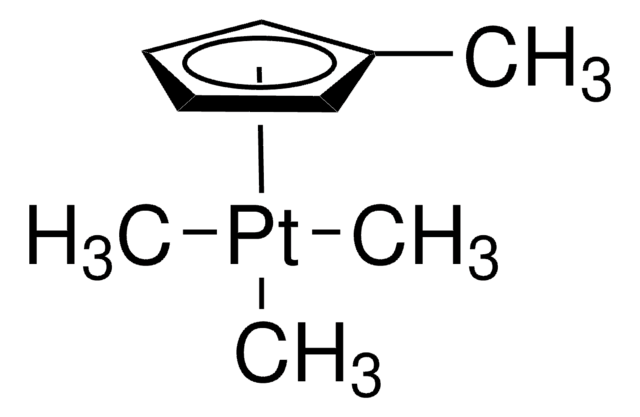The ampules are intended for one-time use only. For any remaining material, it is advised to transfer it to a bottle with a screw cap in a glove bag under inert atmosphere instead of trying to re-seal the glass ampule. It's important to note that this material is highly sensitive to air and water, so it cannot be guaranteed that the material will not degrade once the ampule has been opened and the contents transferred to a new bottle.
469858
Tetrakis(dimethylamido)titanium(IV)
99.999% trace metals basis
Synonym(s):
TDMAT, Tetrakis(dimethylamino)titanium(IV)
About This Item
Recommended Products
Quality Level
Assay
99.999% trace metals basis
form
liquid
reaction suitability
core: titanium
bp
50 °C/0.5 mmHg (lit.)
density
0.947 g/mL at 25 °C (lit.)
SMILES string
CN(C)[Ti](N(C)C)(N(C)C)N(C)C
InChI
1S/4C2H6N.Ti/c4*1-3-2;/h4*1-2H3;/q4*-1;+4
InChI key
MNWRORMXBIWXCI-UHFFFAOYSA-N
Looking for similar products? Visit Product Comparison Guide
General description
Application
accessory
Signal Word
Danger
Hazard Statements
Precautionary Statements
Hazard Classifications
Flam. Liq. 2 - Skin Corr. 1B - Water-react 1
Supplementary Hazards
Storage Class Code
4.3 - Hazardous materials which set free flammable gases upon contact with water
WGK
WGK 3
Flash Point(F)
-22.0 °F - closed cup
Flash Point(C)
-30 °C - closed cup
Personal Protective Equipment
Choose from one of the most recent versions:
Already Own This Product?
Find documentation for the products that you have recently purchased in the Document Library.
Articles
Titanium dioxide applications: Semiconducting material characteristics and diverse functionalities.
Titanium dioxide applications: Semiconducting material characteristics and diverse functionalities.
Titanium dioxide applications: Semiconducting material characteristics and diverse functionalities.
Titanium dioxide applications: Semiconducting material characteristics and diverse functionalities.
-
What sealing procedure was used for the ampule containing 469858-5G? There were issues when attempting to reseal the ampule using parafilm. Therefore, a resealing procedure is needed to ensure that the contents can be used over time without crystallizing.
1 answer-
Helpful?
-
Active Filters
Our team of scientists has experience in all areas of research including Life Science, Material Science, Chemical Synthesis, Chromatography, Analytical and many others.
Contact Technical Service









